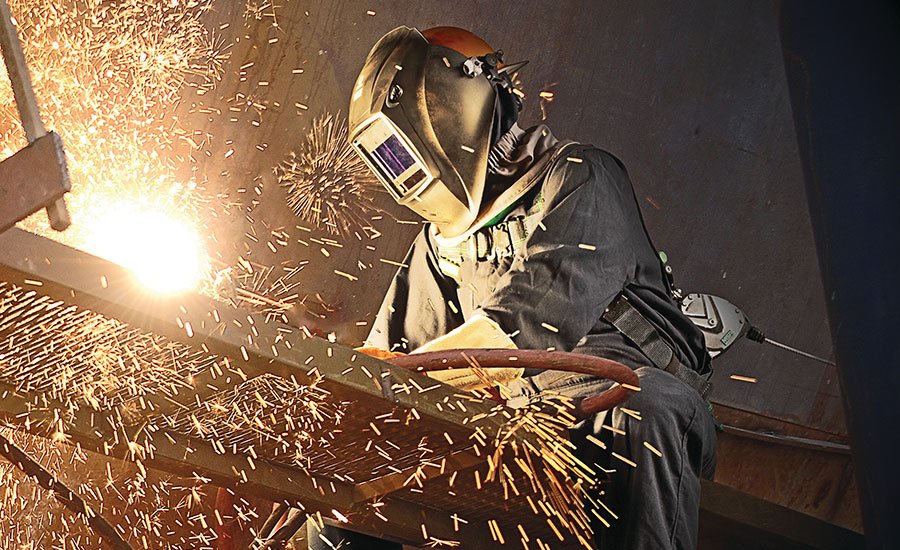What Are The Different Colors Of Tungsten Rod Used For?

Within the science of welding, choosing the proper color TIG tungsten electrode is an art. You may improve the quality of every weld you produce and raise your level of proficiency by learning about the distinct qualities of each color and adjusting your selection to the particular application of welding. Now let’s explore the vibrant realm of TIG tungsten and discover the techniques for producing brilliant, superior welds.
Choosing the right color tungsten rod for your particular application is one of the most important decisions you will make during TIG welding. We’ll go over the various colors of TIG tungsten electrodes in this blog and walk you through the process of choosing the best one for your welding requirements.
Various Types Of Tungsten Electrodes
Because tungsten tig electrodes are color-labeled, they are simple to recognize and easy for welders to buy tungsten electrodes.
- Blue represents 1.5% Multi Type Tungsten Tig Electrode Lanthanated. We only have tungsten tig electrodes in stock because they are the most versatile.
- Red: 2% Thoriated. Use to Tig Weld Stainless and Mild Steel.
- Zirconiated = Brown. Apply to aluminum when tig welding.
- Grey indicates ceriated. Use with AC or DC output on most metals.
- Green is a pure color. Use with Magnesium and Aluminum
RARE TUNGSTEN OR PURE ELECTRODES(Green ):
These TIG electrodes are unalloyed, ‘rare’ tungsten with a 99.5% tungsten least and are generally minimal. They give great curve strength when utilizing AC, with either adjusted wave or unequal wave and consistent high-recurrence adjustment.
Pure tungsten electrodes or rare tungsten electrodes are preferred for AC sine wave welding of aluminum and magnesium because they provide excellent bend reliability with both argon and helium shielding gases. The rare tungsten terminal effectively forms a balled end but tends to spit at larger flows, which should be considered while making basic welds.
2% CERIATED TUNGSTEN ELECTRODES (GREY):
These TIG electrodes contain the most common rare earth elements as well as 2% non-radioactive ceria alloy. The addition of this little amount of cerium oxide improves the electrode’s electron outflow capabilities, giving it a better-starting trademark and a higher current conveyance limit without spitting.
These terminals are very useful and can be used with either DC or AC electrode negative. In comparison to rare and ceriated tungsten, the tungsten electrodes allow for higher levels of bend soundness. At low currents, they have excellent curve beginning qualities.
LANTHANATED TUNGSTEN ELECTRODES (Blue):
One of the rare earth elements, non-radioactive lanthanum oxide—often referred to as lanthanum—is alloyed into these TIG electrodes. These terminals feature excellent curve dependability, low disintegration rate, bend beginning, and re-start capabilities.
When compared to rare tungsten, expanding 1–2% lanthana increases the maximum current conveyance limit by approximately 50% for a given size terminal when using rotating current. The cost of the terminal increases with the amount of lanthana present. Changes in welding boundaries and techniques may be necessary due to the marginally different bend voltages that lanthana terminals can operate at compared to tungsten electrodes that have been thoriated or ceriated.
Zirconiated Tungsten ( BROWN):
The tungsten percentage of this electrode is 99.1%, while the zirconium content ranges from 0.15% to 0.40%. It is ideal for AC welding due to its balled tip and robust resistance to contamination. Zirconiated electrodes are unsuitable for use in DC welding operations while having a current-carrying capability similar to or greater than that of thoriated tungsten.
Thoriated Tungsten (RED):
These electrodes have 1.7% to 2.2% thorium and at least 97.3% tungsten. Because of their reputation for dependability and ease of use, these electrodes are among the most extensively used ones today. But because it’s radioactive, a lot of welders search for other options. Specialized AC welding applications, such as thin-gauge aluminum or materials thinner than 0.06 in., and DC welding are the main uses for these electrodes.
Conclusion
In welding applications, choosing the appropriate TIG tungsten electrode color and diameter is crucial. The type of tungsten indicated by the color has a direct bearing on the welding procedure and the final product’s properties. Choosing the right diameter also guarantees the best possible arc penetration, control, and stability.
For More ( CLICK HERE )




